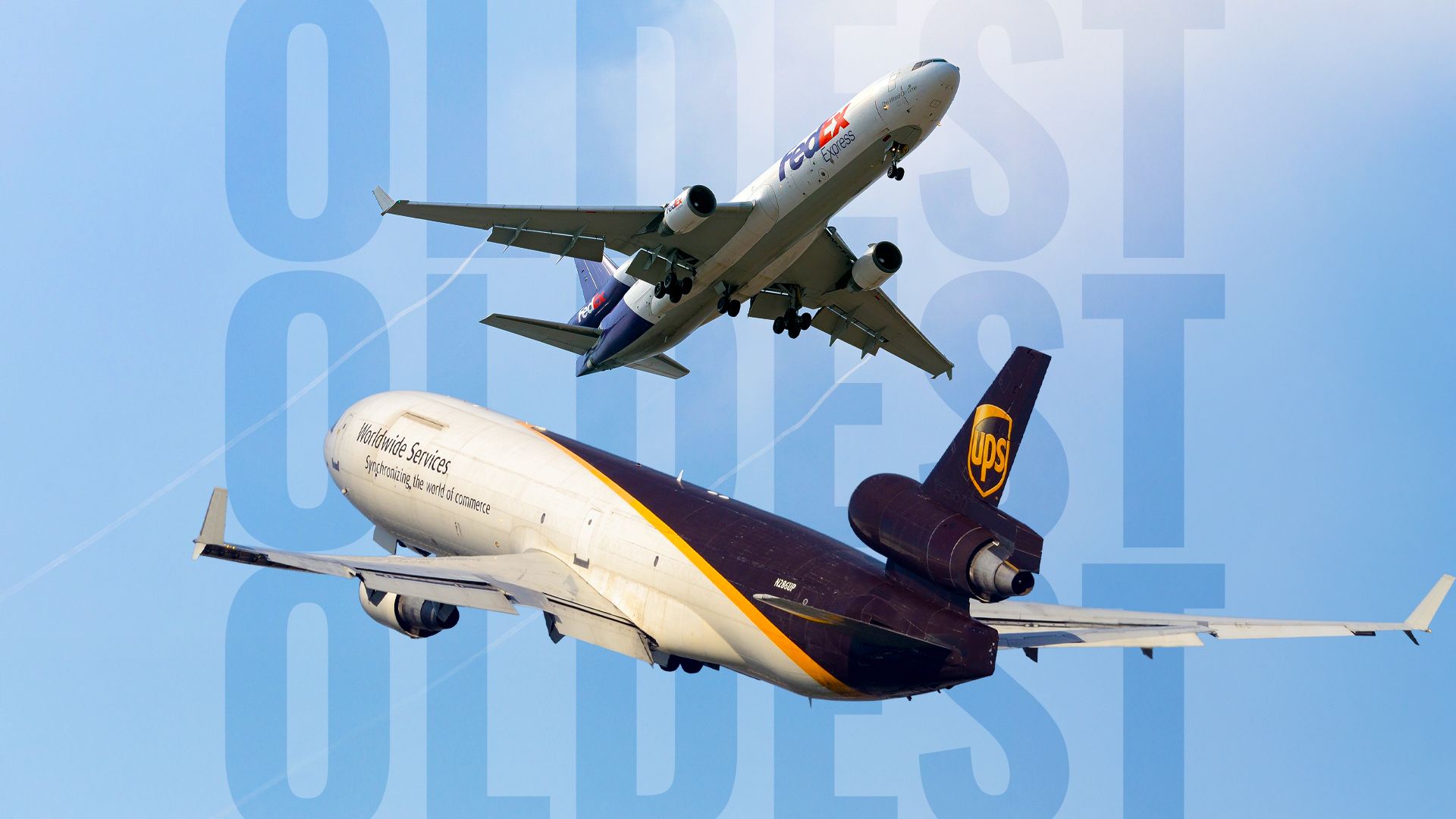The global commercial aircraft fleet is aging, with an average age of approximately 14.8 years as supply chain disruptions continue to hinder aircraft manufacturers. According to the European Union Aviation Safety Agency (EASA), passenger jets typically retire between 25 and 30 years, while freighters can remain operational for up to 40 years. This trend is particularly evident among cargo operators such as FedEx Express and UPS Airlines, both of which operate fleets that include aircraft exceeding 40 years in age.
Fleet Age Comparison: UPS Takes the Lead
FedEx and UPS are two of the largest cargo carriers globally, dominating the air cargo market with extensive fleets and networks. FedEx Express leads in fleet size with around 424 aircraft, while UPS Airlines operates 295 aircraft. According to data from ch-aviation, the average age of FedEx’s fleet is 23 years, with its oldest active aircraft being the Airbus A300-600R(F) at an average of 34.2 years. In contrast, UPS’s fleet averages 25.3 years, making it the older fleet overall, with its oldest aircraft being the Boeing 767-200ER(BDSF) at 40.8 years.
Both carriers utilize various aircraft types, ranging from the Airbus A300-600RF to the Boeing 747-8F. UPS has a notable advantage in terms of fleet age, but FedEx operates some of the oldest individual aircraft, such as the Boeing 757-2T7(SF), which is approximately 42.7 years old.
A Look Back: The Evolution of FedEx and UPS Fleets
FedEx began operations in 1973 with just 14 converted Dassault Falcon 20s, linking 25 U.S. cities. As the company grew, it transitioned to larger aircraft, acquiring used Boeing 727s and introducing widebody jets like the McDonnell Douglas DC-10. FedEx’s fleet has evolved significantly, reflecting changes in the freight industry and regulatory environment.
In 1989, the acquisition of Flying Tiger Line expanded FedEx’s international reach, adding long-haul aircraft such as the Boeing 747. Despite a focus on modern aircraft like the Boeing 777F, FedEx still operates older models, including the Airbus A300 and Boeing 757, to meet demand efficiently.
UPS’s journey began in 1970 when it started as the American Messenger Company. Following deregulation in 1978, UPS launched its airline division and acquired various aircraft types, including used Boeing 727s and Douglas DC-8s. The formation of UPS Airlines in 1988 marked a significant milestone, allowing the company to expand its domestic and international services.
Today, UPS operates over 800 destinations worldwide, maintaining a balance between older aircraft and newer models to optimize its operations. Its oldest active aircraft, the Boeing 757-200PF registered as N402UP, has been in service since 1987.
Why Cargo Airlines Rely on Aging Fleets
The reliance on older aircraft by cargo carriers like FedEx and UPS can be attributed to several factors. Older jets are generally less expensive to purchase, allowing carriers to expand their fleets quickly and achieve profitability sooner. Additionally, these aircraft often require lower maintenance costs, facilitating further investment in upkeep and operational efficiency.
Moreover, cargo aircraft typically operate fewer flights compared to passenger planes, resulting in lower overall flight hours. This reduced usage allows older models to remain airworthy for longer periods, making them economically viable for cargo operations. While both FedEx and UPS continue to operate older aircraft, the industry is shifting. Increased production capacity at manufacturers like Airbus and Boeing is leading to a gradual replacement of older models with more efficient, dedicated freighter variants.
In conclusion, while UPS maintains the older fleet overall, FedEx features some of the most aged individual aircraft in service. The decisions behind fleet composition reflect broader trends in the cargo industry, balancing cost, efficiency, and operational demands.






